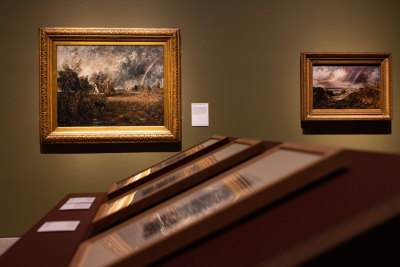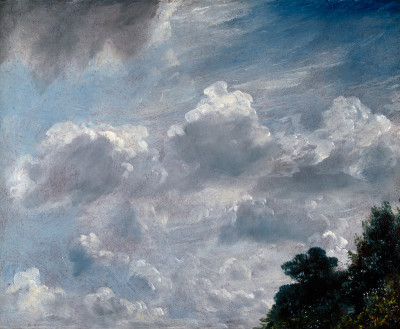Artist of the month: November 2015
Artist of the month: November 2015
Andrea Appiani (1754 – 1817)
By The RA Collections Team
Published 1 November 2015
Andrea Appiani is Lombardy’s most accomplished and well-known neoclassical painter, distinguished particularly in his production of frescoes.
-
Born in Milan in 1754, Andrea Appiani initially studied medicine and later anatomy at the Ospedale Maggiore, which gave him a formative understanding of the human figure and its representation.
Throughout his lifetime, Milan was in the midst of great cultural and political upheaval, with control of the city being passed from the Spanish to the Republic of Vienna in 1757, and then to the French from 1796 until 1815. Despite this turmoil, patronage for the arts continued, particularly favouring the Neoclassical style. With Appiani esteemed as its major proponent, he received many important commissions for decorative building schemes.
Without undermining the importance of his works of sacred and religious themes in the form of frescoes and paintings in the churches of Milan and Brianza, or his numerous portraits, the classic spirit of Appiani finds its best expression in the decorative painting cycles of mythological and allegorical subject matter. Among his most successful of these are the schemes realised in the French court after the arrival of Napoleon in Italy; his cycle I Fasti di Napoleone (1803–1807), is considered to be the prime example of Appiani’s style.
Appiani began to execute this cycle soon after the invasion of the French into Italy in 1796, and the artist himself helped to install the French in Milan, believing they would help quicken the arrival of Italian independence. Under the patronage of Napoleon, Appiani’s career ascended. He was on very close personal terms with the emperor and his immediate circle, culminating in his appointment as First Painter to the Emperor in 1805.
I Fasti is comprised of a series of 39 paintings executed in tempera on canvas, commissioned for the Sala delle Cariatidi of the Palazzo Reale in Milan. Celebrating the young commander’s military victories, the whole cycle narrates across 21 episodes the heroic actions of Napoleon in peace and war, illustrated in chronological fashion from the Battaglia di Montenotte (1796) to the Vittoria di Friedland (1807) and finishing with allegorical medals.
Before the paintings were finished, Napoleon himself requested they be engraved. The direction of the engraving project was entrusted to the esteemed Milanese engraver Giuseppe Longhi, who worked with a talented group to produce the images. After the publication of the first edition in 1826, the prints became widely disseminated and known. During the Second World War, the paintings were destroyed by bombing, so the engravings remain an important visual record of the original cycle.
The principal reference for the frieze-style composition is Trajan’s Column – a triumphal column in Rome, which similarly narrates a sequence of events in a continuum. Appiani’s engravings narrate the military life of the Emperor.
Part one: Ingresso dei Francesci in Milano, 15 May 1796
-

Giuseppe Rosaspina after Andrea Appiani, Ingresso dei francesi in Milano, 15 maggio 1796, 1807–16.
Etching. © Royal Academy of Arts, London.
-
The entry of the French into Milan depicts the triumphant procession of the French arriving into the city on 15 May 1796. The grandeur of the scene is elevated with the frieze-like composition that give a sense of the horses appearing to proceed forwards. Napoleon in the centre, is on horseback, turning his head to look outward towards the viewer. The depiction of Napoleon on horseback is a common motif in images of him, underlying the force and potency of his command.
Part two: Incontro di Bonaparte con il messagero Austriaco a Lontano, 4 agosto 1796
-

Giuseppe Rosaspina after Andrea Appiani, Incontro di Bonaparte con il messaggero austriaco a Lonato, 4 agosto 1796, 1807–16.
Etching. © Royal Academy of Arts, London.
-
Lonato, southwest of Lake Garda, was the site of the fierce battling between the Napoleonic and Austrian army. On 4 August, three Austrian battalions led by Oberst Knorr marched into Lonato, Bonaparte’s lightly-guarded headquarters in the early morning. Surprised and heavily outnumbered, this could have been the moment of his capture, but when called on to surrender, Napoleon retorted with his famous bluff: “Poor fool, don’t you know you are in the presence of the general-in-chief and that he is here with his entire army! Go tell those who sent you that I give them five minutes to surrender or I will have them put to the sword to avenge the outrageous insult they dare give me!” Cowed, the Austrian commander capitulated without firing a single shot, and surrendered 2000 men and three cannons.
This engraving by Rosaspina is clearly divided into two parts, depicting the meeting of Napoleon and Knorr on that day. To the left is the Austrian general, depicted in an appropriate gesture of cowering, and to the right is Napoleon, defiantly pointing his finger and ordering him back.
Part three: Tre Medaglioni Allegorici
-

Michele Bisi after Andrea Appiani, "Tre medaglioni allegorici" (right to left): "La battaglia di Millesimo e il combattimento di Dego, 14–15 aprile 1796"; "Battaglia di Castiglione e combattimento di Pescheria, 5–6 agosto 1796"; "Resa di Mantova, 2 febbraio 1797", 1807–16.
Etching. © Royal Academy of Arts, London.
-
These three allegorical medallions – engraved by Michele Bisi – are divided by two winged female figures symbolising Victory, each holding the laurel crown and palm in their hands. The first recounts the victory of Millesimo and Dego in April 1796 by depicting one of the great feats of Hercules – here using his club to beat the five-headed Hydra. The second medal narrates the battle of Castiglione and Peschiera in August 1796 with three combatants. The final medal depicts the raising of Mantova in February 1797, which shows the city depicted in the form of a woman giving the keys of the city to the victor, dressed in Roman armour.
The Fasti remain, on a thematic level, precious documents of the events of their historic moment. Occupying an in-between position between reality and mythology, they are in perfect accordance with the wishes of Napoleon to see the praises of his endeavours sung in real time, with a painted history in memory of his glory.
A selection of engravings after Andrea Appiani’s I Fasti di Napoleone are currently on display accompanying Daniel Maclise: The Waterloo Cartoon, in the Weston Rooms of Burlington House until 3 January.
November’s object of the month is Bill Jacklin RA’s Ice Rink, 3pm (1992). Find out more about the RA Collection.






